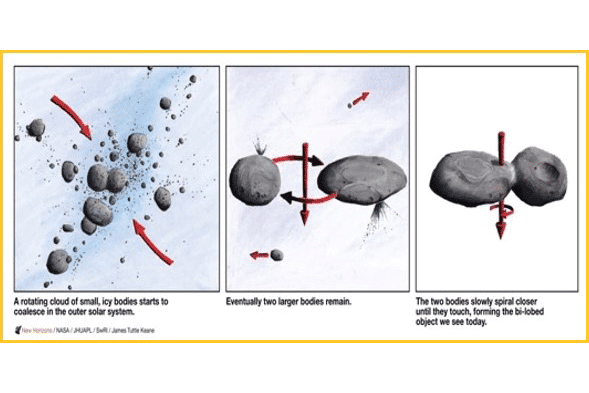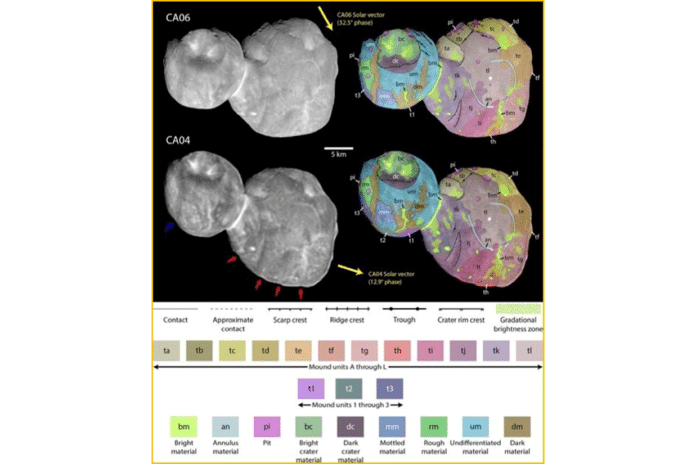In 2019, NASA’s New Horizons spacecraft made a close flyby of the pristine Kuiper Belt object Arrokoth. Using that data, scientists identified 12 mounds on Arrokoth’s larger lobe, Wenu, which are almost the same shape, size, color, and reflectivity. They also tentatively identified three more banks on the object’s smaller lobe, Weeyo.
A new study led by Southwest Research Institute (SwRI) Planetary Scientist and Associate Vice President Dr. Alan Stern suggests that these mounds (approximately 5-kilometer-long) on Arrokoth are similar enough to offer a common origin. These “building blocks” may serve as a roadmap for future research on planetesimal formational models, according to the SwRI study.
Lowell Observatory’s Dr. Will Grundy, co-investigator of the New Horizons mission, said, “It’s amazing to see this object so well preserved that its shape directly reveals these details of its assembly from a set of building blocks all very similar to one another. Arrokoth almost looks like a raspberry, made of little sub-units.”
The geology of Arrokoth supports the streaming instability concept of planetesimal creation, where items were gradually accumulated to form Arrokoth in a local region of the solar nebula that was going through gravitational collapse at collision speeds of only a few miles per hour.

Stern, the Principal Investigator of the New Horizons mission, said, “Similarities in sizes and other properties of Arrokoth’s mound structures suggest new insights into its formation. If the mounds represent the building blocks of ancient planetesimals like Arrokoth, then planetesimal formation models must explain the preferred size for these building blocks.”
Likely, other pristine planetesimals will be some of the flyby targets for NASA’s Lucy mission to Jupiter’s Trojan asteroids and ESA’s comet interceptor. This could help us understand how planetesimals formed in other parts of the early solar system and whether those processes were similar to those discovered by New Horizons in the Kuiper Belt.
Stern said, “It will be important to search for mound-like structures on the planetesimals these missions observe to see how common this phenomenon is, as a further guide to planetesimal formation theories.”
Journal Reference:
- S. A. Stern, O. L. White, W. M. Grundy et al. The Properties and Origin of Kuiper Belt Object Arrokoth’s Large Mounds. The Planetary Science Journal. DOI: 10.3847/PSJ/acf317
